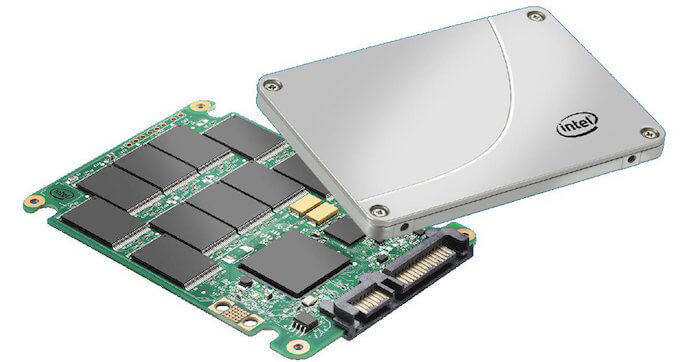Flash memories are part of our daily lives, and surely, we have one or several around us. But we really know less about questions like what exactly flash memory is? What is the difference between SD and SSD? all these questions and many others will be answered in this article, where we will explain in a simple way, what is a Flash memory and why all flash memories are not same.
Flash Memory – The Basic Definition
Flash memory is a derivative of the EEPROM memory. It is designed to make storing large amounts of data in a small space possible, allowing reading and writing in multiple memory locations with the same operation. And all thanks to electrical impulses, which also gives it a high speed operation than the EEPROM type (which acts on a single memory cell at a time)
This type of memory, is based on the use of semiconductors. In addition to being non – volatile and rewritable, it possesses almost all the features of RAM, along with the added advantage that it is non-volatile, meaning, what is stored in this type of flash memory, does not get deleted when you disconnect the device from the PC or the apparatus, unlike RAM.
Flash memories are extremely important, especially in today’s computer world, owing to its low power consumption, portability and size, as well as safety and efficiency; makes them ideal for supporting data and information created with digital cameras, smartphones, audio devices, among other gadgets. Even, they are quite resistant to any blow or fall, which represents a huge improvement over portable mass storage devices of previous generations.
Although all flash memories are reliable storage media with presence across various gadgets, all Flash memories are not the same. There is a significant technological difference among them.
Why All Flash Memories Are Not Same
Named after the internal characteristics similar to corresponding gates exhibited by individual cells, there are two main types of flash memory: NAND-Based, NOR-Based.
Owing to the advantages NAND-Based Flash memories have over NOR-Based ones, our smartphones, flash drives, SSDs have the NAND type in them.
But the NAND Technologies implemented into our devices diverge at two important points: Price and Speed (or technically as SLC and MLC)
In a Single Level Cell (SLC) NAND Flash chip, each cell can exist only in either of the two states, 1 or 0, thus storing one bit of information per cell. Due to this, there is increased speed and relatively increased power consumption. This is the technology present in high-end expensive SSDs. These have higher read/write cycles than MLC Flash memory chips, hence occupy larger space and due to the same reason the manufacturing costs are higher compared to a MLC.
Additionally, the memory controller present in a SSD is far more superior to the micro-controller present in Flash drives or SD cards (usually containing small amounts of RAM and ROM). Here are a few functions that are performed by a typical SSD controller:
- Wear leveling
- Bad block mapping
- Error-correcting code (ECC)
- Read scrubbing and read disturb management
- Read and write caching
- Garbage collection
- Encryption
- Over-Provisioning
Whereas in most Multi Layer Cells (MLCs), there can be four possible states per cell due to which the information stored in each cell is lot higher. So, there is a decrease in the overall number of transistors required to store similar amount of data and hence lower manufacturing costs. However, the flip side is that MLC (and even TLC) have lower data speeds and increased chance of errors along with less endurance. The controller accompanying MLC chips usually have lesser functions based on where it is being employed. The market now is flooded with these MLC and TLC SSDs.
On the other hand, the eMMC NAND chips have far lower speeds and are less resistant to wear and hence data loss is a serious issue in these NAND flash memory types. Also the functionality of controllers is far less compared to the one in an SSD NAND. Hence these can be integrated to the NAND chips which result in the smaller form factor of USB Flash Drives and SD cards. To compare, the read/write speeds of the eMMC storage is far lower than that of a Samsung 960 PRO PCIe SSD.
Here is an excellent visualisation of NAND Flash memory chips and associated technologies well explained by Steve Burke of the Gamers Nexus channel.
Image Credits: Cactus Technologies, TechnoMag



